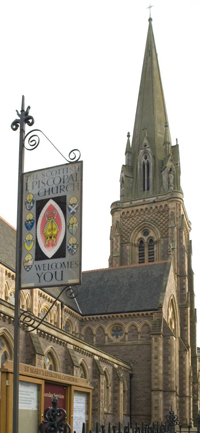
Both Scottish and Anglican, the Scottish Episcopal Church has a unique place in Scottish history. Autonomous and disestablished, its roots are found in the pre-Reformation church in Scotland.
After the Reformation the national church vacillated between Episcopalianism and Presbyterianism for over a century before finally declaring Scotland Presbyterian, with the Church of Scotland receiving all church buildings and assets. Hence in Scotland the parish church is Church of Scotland (there is no equivalent Episcopal parish structure) and away from the cities Episcopal churches are few and far between.
In 1689 the Scottish Episcopal Church originated with those who refused to accept the Revolution Settlement. It suffered because of its continued allegiance to the Stuart dynasty and was persecuted for the next century.
But the beginning of the nineteenth century saw the laws against Episcopalians relaxed; the increased trade and cultural links between Scotland and England encouraged growth in the church as part of the general expansion of church building in the Victorian era.
The Scottish Episcopal Church is a lively church; liturgical innovation is encouraged, built around our distinctive Scottish liturgy and influenced by the rediscovery of our Celtic roots. The ministry of the laity is growing, whilst Diocesan Synods and congregational Vestries allow creative church government.
In recent years the Scottish Episcopal Church has become known for its involvement in social issues. Mission 21, planned to meet the challenges and opportunities of the 21st Century, seeks to take the church out into the local community and address its needs.
The Scottish Episcopal Church, while never having been a part of the Church of England, is a province of the worldwide Anglican communion, with seven Dioceses, each with its own Bishop and Cathedral. The Episcopal Church does not have an Archbishop; instead, one of the Bishops is elected “Primus”.
The Diocese of Glasgow and Galloway is geographically large and culturally varied, ranging from Glasgow and the industrial Clyde to rural Borders country.
